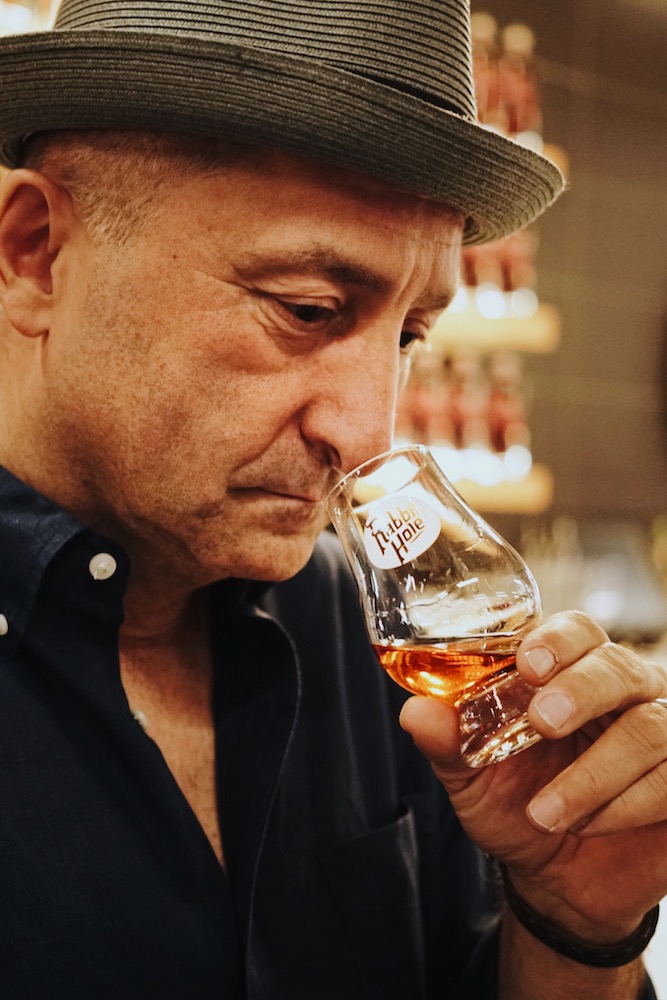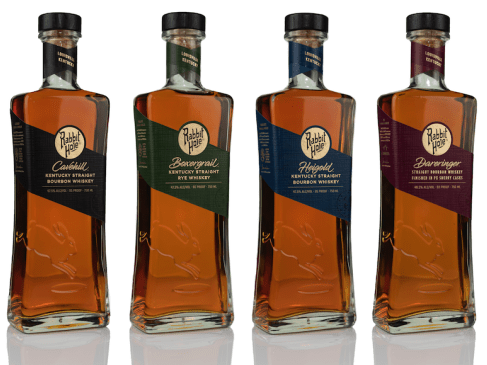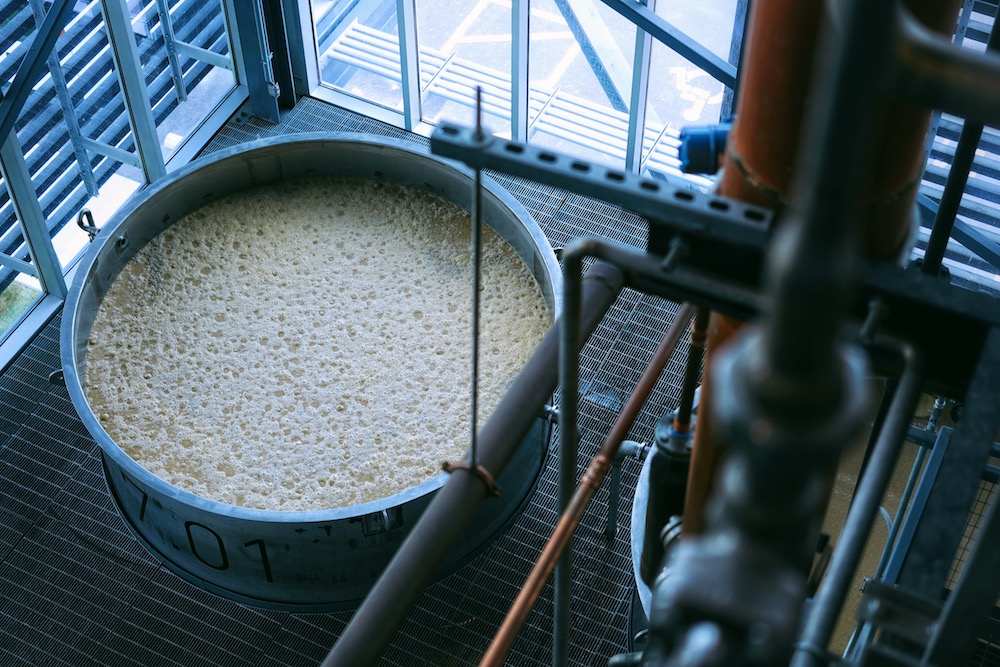The number of whiskeys on retail shelves and back bars has never been higher. So how does a new distillery stand out amidst the brown spirits boom?
Founded in 2012, Rabbit Hole Distillery was already a growing brand, and a new Louisville hot spot on the Kentucky Bourbon Trail, when news came in June of a partnership with Pernod Ricard.
For anybody following the industry, this deal was no surprise. Pernod Ricard has recently invested in emerging craft brands in trendy categories — Del Maguey Mezcal, for instance — with the goal to incubate and expand. As a rapidly growing producer of craft whiskey and gin, Rabbit Hole was a natural fit for that investment portfolio.
What was already a bright future now appears even sunnier. Founder and Distiller Kaveh Zamanian — previously a PhD psychologist — says that Pernod Ricard was attracted, in part, by Rabbit Hole’s blend of innovation and authenticity.
Those two hallmarks of the company will not change under the partnership, Zamanian says. And for good reason: they are what allow newer distilleries like Rabbit Hole to emerge in this current (crowded) golden age of American whiskey.
Innovation Leads Growth
Given the Pernod Ricard partnership, it’s easy to imagine Rabbit Hole one day achieving the ubiquitous shelf presence of Del Maguey. With current distribution in 17 states plus Washington D.C., Zamanian foresees a national footprint by 2020.
It’s an ambitious growth plan that Rabbit Hole backs up with innovative spirits. The distillery differentiates with cutting-edge production techniques. At the forefront of this mission are unusual mash bills. Rabbit Hole uses a great deal of malted barley, typical with Scotch, in their American whiskeys.
“It doesn’t make sense to regurgitate what was already coming out of Kentucky,” explains Zamanian. “We always wanted to do something different.”

Rabbit Hole’s current lineup is: Heigold Kentucky Straight Bourbon (70% corn, 25% malted barley, 5% malted rye), Cavehill Kentucky Straight Bourbon (70% corn, 10% malted barley, 10% malted wheat, 10% honey malted barley), Boxergrail Kentucky Straight Rye (95% rye, 5% malted barley), Dareringer Straight Bourbon Whiskey Finished in PX Sherry Casks (68% corn 18% wheat, 14% malted barley) and a London Dry Gin.
The distillery has also built a reputation for finding efficiencies and innovations in production. They cook grains with the care of “culinary chefs,” after putting much time in the lab into discovering optimal set points in temperature holding, and other cooking components.
“We look at the grain-cooking process as a big part of flavor,” Zamanian says. “It’s actually the only proprietary part of our entire production. We have already established our fingerprints on our products just in the way that we cook our grains.”
Rabbit Hole uses only toasted barrels, purchased from nearby Kelvin Cooperage. They fill barrels at a lower 110 proof to maximize flavor potential.
“We’re putting our own spin on it,” says Michael Motamedi, Rabbit Hole CMO. “It’s important for us to respect the consumer and our own craft in doing something special. We put a distinct product into every bottle.”
Altogether the result is a lineup of whiskeys that bare more flavors than their age might suggest. Remember: Rabbit Hole opened in 2012. And this is not sourced juice. Even without a large stock of aging barrels to draw upon, Rabbit Hole produces spirits that do not taste rushed-to-market but mature beyond their years.
Education and Transparency
With all this innovation comes the need to educate consumers. The majority of U.S. drinkers are likely unfamiliar with the term “mash bill” — forget what defines grain recipes as normal versus unusual.

“It can be an upward battle differentiating mash bills in the minds of consumers,” Motamedi says.
Zamanian agrees. “Bourbon is still in the early phases of coming out of its hibernation. Many consumers are still getting a feel and taste for bourbon.”
To help alleviate this process, Rabbit Hole explicitly highlights each product’s mash bill on its label. The company also recently released updated branding, giving each product a specific name to stand out. Each name also ties into a local Louisville legend who displayed innovation. “We’re trying to highlight our provenance, how we’re tied to Louisville,” Zamanian says.
While mainstream consumers may remain whiskey novices, the brown spirits boom has given rise to a new class of aficionados. “It’s interesting to see how having all this knowledge now has become cool,” says Motamedi. “Many people are now diving down deeper into the rabbit hole of this category to learn as much as they can.”
Which rewards transparency on the part of producers. This is apparent when touring Rabbit Hole Distillery in downtown Louisville.
From the outside, the facility could pass as a modern art museum. Inside, clever use of glass and elevation gives guests a thorough and constantly shifting perspective of production.

“We designed the entire building around the process of distilling,” Zamanian says. “We’re going to show the good, the bad, and the ugly of whiskey-making.”
“Our mission is to educate the U.S. consumer,” he adds. “We can talk about our brands openly, without using bells and whistles.”
Windows built into the walls provide views into production steps both seamless and unavoidably messy. Sets of stairs rise through Rabbit Hole at different angles, reminiscent of M.C. Escher. These lead to a long, large, top-floor tasting room. Up here, guests receive a panoramic view of the city at the heart of American whiskey culture.

It’s a lot to take in. For whiskey nerds who have toured a distillery or two, Rabbit Hole offers fresh perspectives on a familiar process. For newbies, the facility is an almost unparalleled educational opportunity.
“We’re very transparent here,” Zamanian says. “From the different vantage points you can really get a feel for the ecosystem here. We want to give the full sensory experience: sight, sound and smell.”
And in an age when many brands source whiskey — and/or rush products onto retail shelves by cutting time and corners — distilleries like Rabbit Hole can stand out.
“Consumers respond to what resonates with them as authentic,” Motamedi says.
What’s Next
Even before the Pernod Ricard partnership, Rabbit Hole was on an upward trajectory. Distillery output is up to 20,000 barrels annually. Since last October, the facility has run 24 hours a day, seven days a week. This requires a staff that’s nearing 50 in number.
Much of the barrel aging occurs offsite. Barrels stacked in the distillery tend to be in the finishing program. Rabbit Hole will soon open a new offsite rickhouse made of metal, rather than wood. This should prevent fire-related tragedies that have recently befallen other warehouses.
The metal rickhouse will maintain the same interior temperatures as wooden counterparts, Zamanian says. The nature of the structure also allows for a pneumatic system for loading and unloading barrels.
“We’re trying to be more efficient in our operation in ways that help advance the industry a little bit,” Zamanian says. “It’s these little things that we’re doing that help push the ball forward.”
Kyle Swartz is editor of Beverage Wholesaler. Reach him at kswartz@epgmediallc.com or on Twitter @kswartzz or Instagram @cheers_magazine. Read his recent piece, What’s Driving Imported Whisky Sales in 2019.









